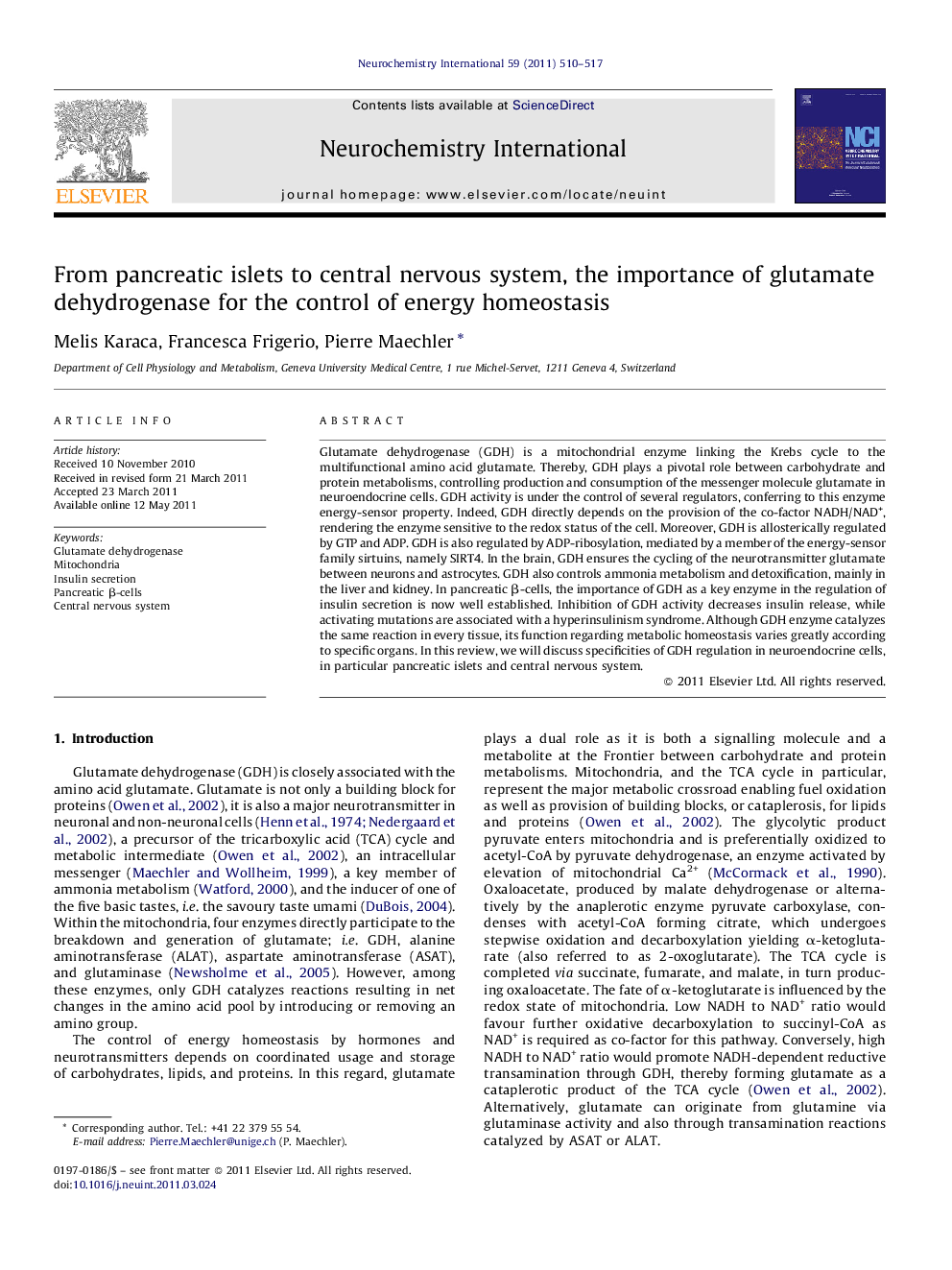| کد مقاله | کد نشریه | سال انتشار | مقاله انگلیسی | نسخه تمام متن |
|---|---|---|---|---|
| 2200953 | 1099988 | 2011 | 8 صفحه PDF | دانلود رایگان |

Glutamate dehydrogenase (GDH) is a mitochondrial enzyme linking the Krebs cycle to the multifunctional amino acid glutamate. Thereby, GDH plays a pivotal role between carbohydrate and protein metabolisms, controlling production and consumption of the messenger molecule glutamate in neuroendocrine cells. GDH activity is under the control of several regulators, conferring to this enzyme energy-sensor property. Indeed, GDH directly depends on the provision of the co-factor NADH/NAD+, rendering the enzyme sensitive to the redox status of the cell. Moreover, GDH is allosterically regulated by GTP and ADP. GDH is also regulated by ADP-ribosylation, mediated by a member of the energy-sensor family sirtuins, namely SIRT4. In the brain, GDH ensures the cycling of the neurotransmitter glutamate between neurons and astrocytes. GDH also controls ammonia metabolism and detoxification, mainly in the liver and kidney. In pancreatic β-cells, the importance of GDH as a key enzyme in the regulation of insulin secretion is now well established. Inhibition of GDH activity decreases insulin release, while activating mutations are associated with a hyperinsulinism syndrome. Although GDH enzyme catalyzes the same reaction in every tissue, its function regarding metabolic homeostasis varies greatly according to specific organs. In this review, we will discuss specificities of GDH regulation in neuroendocrine cells, in particular pancreatic islets and central nervous system.
► Enzymatic regulation and genetics of glutamate dehydrogenase (GDH).
► Tissue specificity of GDH according to specific organ functions.
► Role of GDH in pancreatic β-cell and regulation of insulin secretion.
► Role of GDH in central nervous system and glutamate cycling between neurons and astrocytes.
Journal: Neurochemistry International - Volume 59, Issue 4, September 2011, Pages 510–517